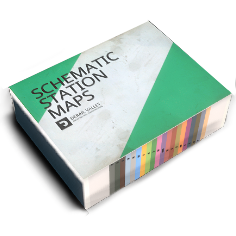Wheels & Brakes Damage: Difference between revisions
Appearance
No edit summary |
Cleanup |
||
| Line 2: | Line 2: | ||
<translate> | <translate> | ||
<!--T:1--> | <!--T:1--> | ||
{{pll|Damage Overview|Damage}} to a {{pll|Rail Vehicle Types|vehicle's}} wheels and brakes can occur from collisions, but is much more severe when caused by {{pll|Wheelslip|wheelslip}}, {{pll|Wheelslide|wheelslide}} and {{pll|Derailing|derailments}}. | |||
Wheels also accumulate small damage from distance traveled, as part of their regular wear and tear. Likewise, using {{pll|Brake Shoes|mechanical brakes}} contributes to the wear too. | |||
<!--T:2--> | <!--T:2--> | ||
The more the wheels and brakes of a vehicle are damaged, the more banging noise they produce when rolling. However, damage to wheels and brakes does not otherwise affect performance of {{pll|Rail Vehicle Types|vehicles}}, or pose any risk. | |||
</translate> | </translate> | ||
[[Category:Servicing|7]] | [[Category:Servicing|7]] | ||
Revision as of 10:56, 10 March 2025
Damage to a vehicle's wheels and brakes can occur from collisions, but is much more severe when caused by wheelslip, wheelslide and derailments.
Wheels also accumulate small damage from distance traveled, as part of their regular wear and tear. Likewise, using mechanical brakes contributes to the wear too.
The more the wheels and brakes of a vehicle are damaged, the more banging noise they produce when rolling. However, damage to wheels and brakes does not otherwise affect performance of vehicles, or pose any risk.
